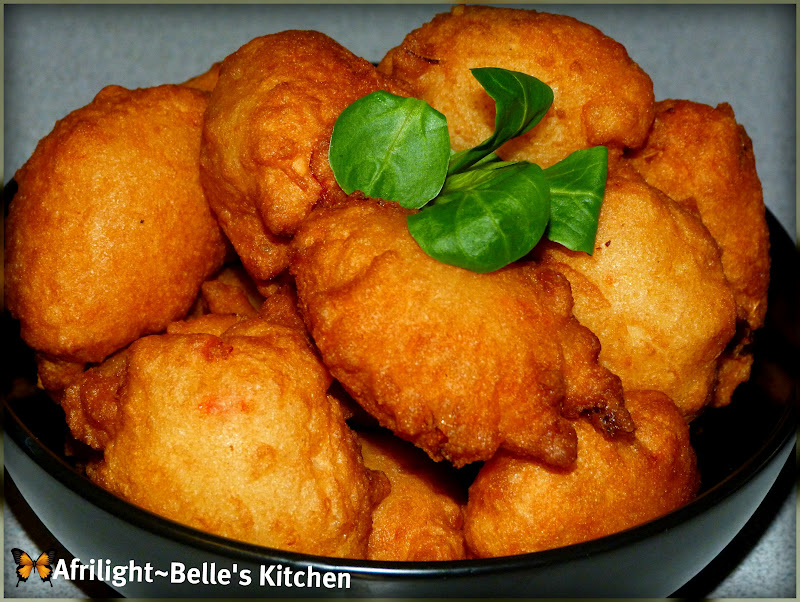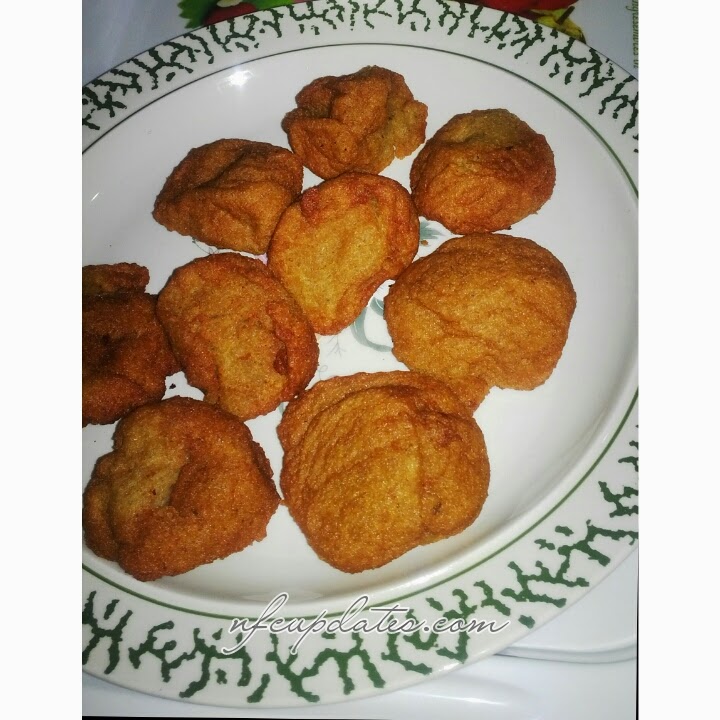The African slave brought much practice cooking. There are many similarities between African cuisine Afro caribbean and Afro Latin.
1.FUFU. foufou or foofoo
It is a thick paste usually made by boiling starchy root vegetables in water and pounding with a mortar and pestle until the desired consistency is reached.
Fufu originated from Ghana, where it is pronounced "fufuo". The word fufu comes from the Twi language. It is eaten with light (tomato) soup, palm nut soup, groundnut (peanut)-abenkwan (palm nut) soup or other types of soups with vegetables such as nkontomire (cocoyam leaves). Soups are often made with different kinds of meat and fish, fresh or smoked. Fufu is basically pounded cassava or pounded yam pounded together with plantain. It is eaten with agussi soup or stew in Ghana and in the Northeast of Brundi.
Fufu is actually originally from Ghana from the Asante ethnic group.[citation needed] Settlers and migrants from India, Togo and Ivory Coast discovered it and modified it in their accord. The word 'fufu' has two possible derivations[dubious – discuss], both deriving from words in the Asante language (asante twi). White, fufuoop (silent p)[dubious – discuss], is the colour of prepared fufu.[citation needed]; pounding, fu-fu, is the process used to produce it[citation needed].
fufu is called:
-
Ugali in east africa
-
Fufu also in Central Africa (Democratic Republic of Congo)
-
Nshima nsima gold-gold in Zambia and Malawi Bidia
-
Sadza in zimbabwe
-
Pap in south africa
-
Mofongo in Puerto Rico
-
Mangu in Dominican Republic
- .........
yam fufu (west africa)
2 lb yams 1/4 tsp black pepper 1/4 tsp salt 1 tsp butter
1. Place the yams in cold, unsalted water, bring to a full boil, and cook
25 minutes, or until soft.
2. Remove the yams, cook, and peel. Mash with the other ingredients.
3. Place in a food processor, and run briefly to remove lumps. DO NOT
PUREE! (If a processor is not available, go directly to step 4.)
4. Remove foofoo to a bowl, and beat with a wooden spoon or wire
whisk until smooth. The foofoo should have a sticky, slightly resilient
consistency.
5. Shape the foofoo into balls with your hands, and serve warm.
Plantain fufu
ghanaian plantain fufu
:
ngredients:
A – 600gr plantain
B – 200gr Cassava
Cooking:
1 – In unsalted boiling water, cook A and B, peeled and sliced for about 15 to 20 minutes.
2 – Remove the pan from the heat, and let them cool down in the cooking liquid.
3 – Drain A and grind until smooth and free of any lumps then add B and mash until smooth.
Fufu de platano (Cuba)
4 to 6 green plantains (depending on size)
1/2 cup of pork cracklings
3 tbsp olive oil
1 head of garlic minced
sea salt to taste
black pepper (optional)
Cut the plantains in 1/2 inch pieces, leaving the skin on. Place them in a large pot with water to boil until tender, which is when you can easily prick it with a fork. Once tender, remove from heat and run them under cold water for a few minutes to cool them off so that you can peel off the skin. In a bowl, mash the plantains well and slowly add the pork cracklings and salt, mixing them into the mashed plantains.
In a frying pan saute the garlic and pepper for a few minutes. Pour it over the mashed plantains and serve.
Mofongo
. Fry about 6 plantains in oil in batches until golden. Add to a mixer bowl. Throw about 10 diced garlic cloves into the same oil, then add the oil and garlic to the mixer bowl. Mix with the paddle attachment until chunky and starchy. It shouldn't be smooth like mashed potatoes
Matoke or Matooke (Uganda)
8 -10 plantains
1 lemon, juice of (optional)
oil (for frying)
1 onion , chopped
2 -3 tomatoes , chopped (or canned whole tomatoes, drained)
1 green bell pepper , chopped
3 -4 garlic cloves , crushed
1 chili pepper , chopped (optional)
salt or coriander or cayenne pepper (to taste) or red pepper (to taste)
1 lb ground beef (optional) or 1 lb beef stew meat , cut in bite-sized pieces (optional)
cup beef broth (optional) or 1 cup beef stock (optional)
Peel the plantains, cut into cubes, sprinkle with lemon juice, and set aside.
Heat oil in a large pan. Fry the Onion, tomatoes, green pepper, hot pepper, and garlic together. Add spices to taste. Add meat or broth. Continue frying and stirring until the meat is nearly done or until the broth is starting to boil.
Reduce heat. Add plantains. Cover and simmer over low heat until plantains are tender and meat is done. Serve matoke (matooke, if you prefer) hot.
TomTom (Haiti)
om Tom
This dish originates from the South of Haiti.
There are basically three base for the puree component: Lam Veritab (bread fruit), patat (Batata) and Banan (green plantain).
In... or batata or Green plantain
Crabs
Gombo
Olive Oil
Pepper & salt
Hot pepper (fresh)
Chopped Oignons
Thyme
Finely chopped Parsley & garlic cloves
Preparation
1. Take the breadfruit and boil it in salted water.
(Some people cut it into pieces and remove the heart prior to boiling).
When it is tender and the water has boiled, take off the skin.
Mash it in a pounder while you keep dipping the handle of the pounder in the water you used to boil the breadfruit.
Mash until the breadfruit is pureed.
2. Cook the crabs (Clean the crabs by rubbing them with a cut lemon.
Rinse in cold water.) with the gombo, oil, chopped oignons, finely chopped parsley & garlic cloves, thyme, salt & pepper, hot pepper.
Cook covered until most liquid has evaporated and the mixture starts to color a little bit. Let it simmer (on low fire) until the gombo is tender.
Do not put tomato paste.
3. Serve warm.
In a plate put some pureed breadfruit (depending on the one you cooked) and some of the crabs & gombo.
This dish is eaten with your hands
Mayi moulin ( haiti) or fungi or Ugali (east africa)or fufu de mais .. mean cornmeal fufu( congo)
Water -- 4 cups
Salt -- 2 teaspoons
White cornmeal, finely ground -- 2 cups
Method
Bring the water and salt to a boil in a heavy-bottomed saucepan. Stir in the cornmeal slowly, letting it fall though the fingers of your hand.
Reduce heat to medium-low and continue stirring regularly, smashing any lumps with a spoon, until the mush pulls away from the sides of the pot and becomes very thick, about 10 minutes. Remove from heat and allow to cool somewhat.
Place the ugali into a large serving bowl. Wet your hands with water, form into a ball and serve.
Variations
White cornmeal is the most commonly used grain for ugali. But you can substitute sorghum, millet or coarse cassava flour or even hominy grits.
More or less water can be added to achieve the consistency you prefer.
Stir in a little butter if you like for a richer flavor.
Notes
Ugali is usually served as an accompaniment to meat or vegetable stews, greens or soured milk. To eat ugali, pull off a small ball of mush with your fingers. Form an indentation with your thumb, and use it to scoop up accompanying stews and other dishes. Or you can form larger balls with your hands or an ice cream scoop, place them in individual serving bowls and spoon stew around them.
Cornmeal mush is also found in Caribbean creole cuisine and was certainly brought there by imported slaves. On the islands of Curaçao and Aruba it is known as funchi, funjie in the Virgin Islands. In Antigua and Donimica it is called fungi. Haitians make mayi moulin




 there are many african concepts from Angola that found their way to Brasil, but Brasil has a lot of European, native-indian influence as well. There are lots of white european brasilians too, and mixed brazilians. Which dilutes the whole Angola part, but alas...we're part of the culture there yet. An underground culture though; because christianity made sure that everything African (customs, beliefs, practices) was labeled demonic so...
there are many african concepts from Angola that found their way to Brasil, but Brasil has a lot of European, native-indian influence as well. There are lots of white european brasilians too, and mixed brazilians. Which dilutes the whole Angola part, but alas...we're part of the culture there yet. An underground culture though; because christianity made sure that everything African (customs, beliefs, practices) was labeled demonic so...






















